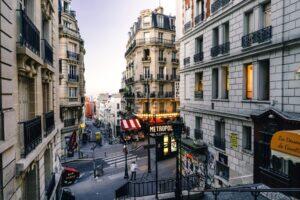Fodor's Expert Review Hôtel des Invalides

The Baroque complex known as Les Invalides (pronounced lehz-ahn-vah-leed) is the eternal home of Napoléon Bonaparte (1769–1821) or, more precisely, his remains, which lie entombed under the golden dome. Louis XIV ordered the facility to be built in 1670 to house disabled soldiers (hence the name), and, at one time, 4,000 military men lived here. Today, a portion still serves as a veterans' residence and hospital. The Musée de l'Armée, containing an exhaustive collection of military artifacts from antique armor to weapons, is also here.
If you see only a single sight, make it the Église du Dome (one of Les Invalides's two churches) at the back of the complex. Napoléon's tomb was moved here in 1840 from the island of Saint Helena, where he died in forced exile. The emperor's body is protected by no fewer than six coffins—one set inside the next, sort of like a Russian nesting doll—which are then encased in a sarcophagus of red quartzite. The bombastic tribute is... READ MORE
The Baroque complex known as Les Invalides (pronounced lehz-ahn-vah-leed) is the eternal home of Napoléon Bonaparte (1769–1821) or, more precisely, his remains, which lie entombed under the golden dome. Louis XIV ordered the facility to be built in 1670 to house disabled soldiers (hence the name), and, at one time, 4,000 military men lived here. Today, a portion still serves as a veterans' residence and hospital. The Musée de l'Armée, containing an exhaustive collection of military artifacts from antique armor to weapons, is also here.
If you see only a single sight, make it the Église du Dome (one of Les Invalides's two churches) at the back of the complex. Napoléon's tomb was moved here in 1840 from the island of Saint Helena, where he died in forced exile. The emperor's body is protected by no fewer than six coffins—one set inside the next, sort of like a Russian nesting doll—which are then encased in a sarcophagus of red quartzite. The bombastic tribute is ringed by statues symbolizing Napoléon's campaigns of conquest. To see more Napoléoniana, check out the collection in the Musée de l'Armée featuring his trademark gray frock coat and huge bicorne hat. Look for the figurines reenacting the famous coronation scene when Napoléon crowns his empress, Josephine. You can see a grander version of this scene by the painter David hanging in the Louvre.
The best entrance is at the southern end, on Place Vauban (Avenue de Tourville); the ticket office is here, as is Napoléon's Tomb. There are automatic ticket machines at the main entrance on Place des Invalides.
READ LESS








